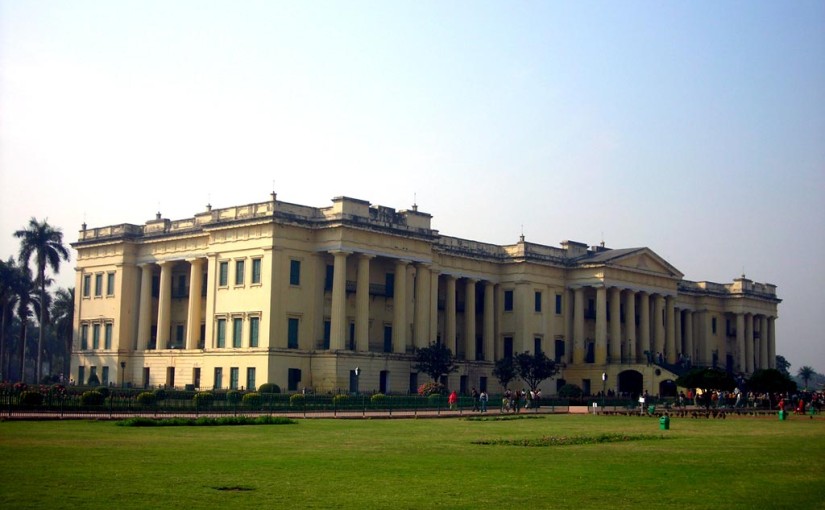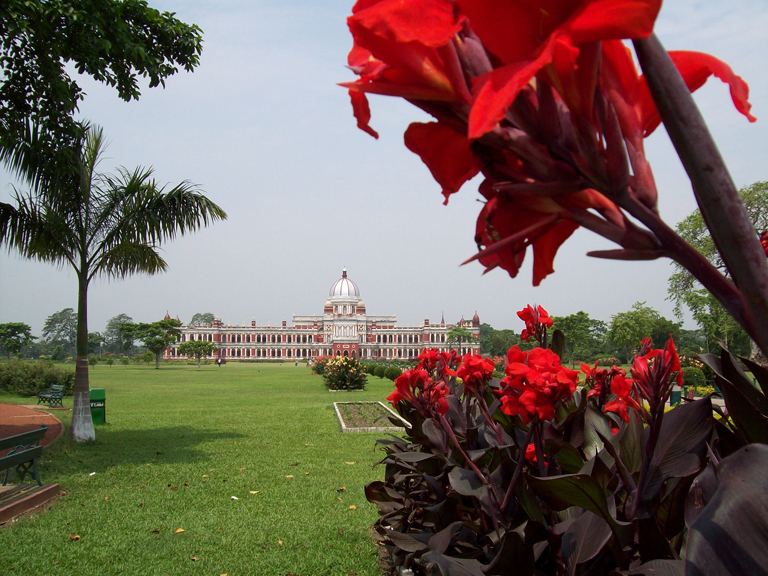Murshidabad is a place of historic importance situated on the southern bank of River Bhagirathi. It was the last capital of Independent Bengal from 1717 to 1773 when the East India Company shifted its capital to Kolkata. The present city is renowned for its silks and places of historical interest. It also serves as the district head quarters of Murshidabad district.
Category: Historical Places in West Bengal
Historical Places in West Bengal
Cooch Behar Raas Mela
Raas Mela or the Raas fair is a grand celebration dedicated to the deity Madan Mohan of Cooch Behar. In fact, its grandness makes it a festival and is basically observed during the month of November according to English calendar and in the month of Kartik as per Bengali calendar. It is one of the most popular festivals of Cooch Behar which attracts people from in and around the district and also from the neighboring state of Assam. It is conducted on the Parade Ground by the local municipal corporation and holds a special significance for the people of Cooch Behar.
Cooch Behar is a district with a royal heritage
Cooch Behar is a district in north east West Bengal with a royal heritage. It is bound by Jalpaiguri to its north, by Assam to its east and by Bangladesh to its south. It used to be ruled by the Koch dynasty and therefore this name. Cooch Behar became a district in West Bengal in 1950 and is the only planned district in north Bengal on the Himalayan foothills. Since the Cooch Behar Palace still holds significance in the development of the district, it has been declared as a heritage town. Cooch Behar also happens to be the maternal home of Maharani Gayatri Devi. The residents enjoy a lovely climate and the best time to visit is during November through February when the temperature is between 10 and 24 degree Centigrade.
Farah Bag in Lalbagh, Murshidabad
Farah Bag is the third of the garden trio in Lalbagh which means ‘garden of pleasure’. Farah Bagh is the smallest among the garden trio and is located on the banks of Bhagirath River. Dahapara, the famous settlement of the Qanungo is situated on the south-western part of Farah Bagh. Farah Bagh is reckoned for its beauty and charm and Ali Jah of the Nawabs used to stay here after an extensive tour of his lands. It has canals, palaces, reservoirs, fountains which make it immensely attractive. The common myth about Farah Bagh is that fairies used to come down to this paradise on earth to spend their time.
Roshni Bag, Muqbara of Suja-ud-Daulah, Murshidabad
Roshni Bag is the mausoleum or muqbara of Suja-ud-Daulah located in Murshidabad district. Suja-ud-Daulah dies in 1739 and was buried in this spot. When translated in English it means ‘garden of lights’. Once you enter the premises, you will notice a 3 domed brick built mosque in the northwestern part stands enclosed in a walled compound. The mausoleum of Suja-ud-Daulah can be seen from the mosque as a rectangular structure. Arriving at the spot is easy by a car; taxi or you can simply walk to it if you are staying around. This place is of utmost significance to the students of history and archaeology.
Cossimbazar Kuthi, Murshidabad
Cossimbazar Kuthi is a relatively less popular tourist spot in Murshidabad. The bazaar area used to be famous due to its silk production which has reduced these days. However, the Cossimbazar Kuthi stall stands at present. During its heyday Cossimbazar Kuthi used to be the residence of Babu Jagabandhu Roy, who was a high class Kulin during the Nawab’s time. He also became the chief of the Cossimbazar Silk Factory in 1760AD. It is also known that Job Charnock had worked in the capacity of assistant in this Kuthi for INR 300.
Dutch Cemetery in Murshidabad
The Dutch Cemetery is located next to the Cossimbazar railway station at Kalkapur where the Dutch owned huge factories in the year 1666 AD were based. The grandeur of the Dutch has been ruined and small tombs of 43 in number remain to this day. Most of the monuments were built between 1721 and 1792 AD. The oldest monument at the Dutch cemetery belongs to Daniel van der Muyl who died in 1721. Most of the monuments are pyramidal in shape with cenotaphs mentioning the names. Some of the popular and relatively less ruined ones include Gregorius Herklots, Matthias Arnoldus Brahe, tamerus Cantes Vischer. The cemetery is maintained by the Archaeological Survey of India.
Jafarganj Muqbara near Hazarduari Palace, Murshidabad
Jafarganj Muqbara or cemetery was built on an area of 3.51 acres by Mir Jafar. It is located approximately half a mile north to the Hazarduari Palace premises inside the bigger campus of Namak Haram Deuri. The cemetery is enclosed within waved walls and is the final resting place of the Nawabs belonging to the Najafi dynasty from Nawab Nazim to Humayun Jah. Nawab Nazim Syud Ahmed Najafi’s tomb was later shifted to Karbala in Arab. It is also home to the graves of Syud Ahmed Najafi (Mir Jafar’s father), Shan Khanum Begum (Alivardi Khan’s sister), Munny and Babbu Begum (Mir Jafar’s widows), Muhammad Ali Khan (Mir Jafar’s brother), Ashraf Ali Khan and Ismail Ali Khan (Mir Jafar’s brother-in-laws). This cemetery is now maintained and administered by the Archaeological Survey of India and the entry fee is 3 INR only.
Chalk Masjid or Mosque in Murshidabad
The Chalk Masjid or Chowk Mosque in Murshidabad is quite a popular tourist attraction located in the south eastern side of Hazarduari Palace. It was constructed by Munny Begum, consort of Mirjafar in 1760. The Chalk Masjid stands tall on the site of Chahel Setun built during the period of Murshid Quli Khan. The exterior and the interior of the masjid is adorned with beautiful and prolific cartouche, vegetal motifs and arch shaped recess with stucco. The mosque has a grand appearance due to the 5 domes in the center with 2 ‘chau-chala-end-vaults’. It is called the ‘Chowk’ because it is an intersection of 5 roads serving as the biggest market area of the city. Pious Muslims gather inside the mosque to observe Id-ul Zoha, Id-ul Fitr, and Ramzan.
Ghari Minar – Hazarduari, Murshidabad
The Ghari Minar or the Clock Tower of Murshidabad, West Bengal is located on coordinates 24°11′15″N 88°16′10″E / 24.187381°N 88.269315°E is a famous tourists spot. It is located to the south of Hazarduari Palace in the Nizamat Fort premises. It was erected in the garden area of Nizamat Fort probably for passengers traveling by boat and sailors. The Ghari Minar comprises of a heavy bell, the dial of a clock facing east towards Bhagirathi River and 4 masonry shields on 4 corners on the ground supported by 4 masonry lions. It is also known as the ‘Big Ben of Murshidabad’, the handles and figures of the clock being visible from the opposite bank. It was designed by Sagore Mistri, the same person who constructed Hazarduari Palace. He was the assistant to Colonel Duncan MacLeod.

